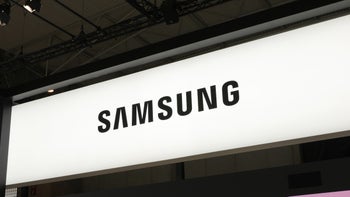Despite US sanctions, Huawei chipmaker SMIC is now the third largest foundry in the world

Despite the trade restrictions imposed on it in 2022 by the US, China's Semiconductor Manufacturing International Corporation (SMIC) managed to become the world's third-largest foundry by revenue in Q1 2024.
According to the latest numbers released by Counterpoint Research, the global foundry industry's revenue increased 12 percent year-on-year during the first quarter of the year, with Taiwan Semiconductor Manufacturing Company (TSMC) exceeding market expectations. The company saw its market share increase from 60 to 62 percent and retained its number one spot.
With the same 13 percent market share as last year, Samsung Foundry remained number two. The company's revenue decreased due to smartphone seasonality, with the Galaxy S24 emerging as a bright spot as the mid-low-end segment struggled due to weak demand.
SMIC's better-than-expected quarterly results helped it outdo UMC and Global Foundries to earn the number three spot in foundry revenue market share. What makes the victory remarkable is that the company had never placed third before.
With a market share of 6 percent, it's far from taking over TSMC and Samsung, but the feat is sure to make the US nervous, which is already wondering if SMIC violated export curbs to make chips for Huawei.
US sanctions require American companies to apply for a license before they can sell to SMIC, impacting its ability to purchase cutting-edge technology and advanced chipmaking tools.
The company surprised everyone when it managed to make a complex 7nm chip without access to extreme ultraviolet EUV equipment, which is made by Dutch company ASML which isn't allowed by the government to sell to SMIC.
SMIC apparently employed a technique known as multiple patterning, which repeats the lithographic process with DUV equipment, to make 7nm chips. This workaround is believed to have been expensive though and it could be challenging to produce chips at scale this way.
The Huawei Pura series, which was announced in April, is powered by SMIC-made Kirin 9010. According to a teardown, the phone is based on an advanced version of SMIC's 7nm process, dubbed as the 7nm N+2 process.
Meanwhile, TSMC and Samsung have already started producing 3nm chips. SMIC can technically build 5nm chips using the DUV tech, but that would be an expensive undertaking.
SMIC also makes chips for computers, IoT technologies, and automobiles. The bulk of its revenue comes from Chinese customers.
According to the latest numbers released by Counterpoint Research, the global foundry industry's revenue increased 12 percent year-on-year during the first quarter of the year, with Taiwan Semiconductor Manufacturing Company (TSMC) exceeding market expectations. The company saw its market share increase from 60 to 62 percent and retained its number one spot.
SMIC's better-than-expected quarterly results helped it outdo UMC and Global Foundries to earn the number three spot in foundry revenue market share. What makes the victory remarkable is that the company had never placed third before.
US sanctions require American companies to apply for a license before they can sell to SMIC, impacting its ability to purchase cutting-edge technology and advanced chipmaking tools.
The company surprised everyone when it managed to make a complex 7nm chip without access to extreme ultraviolet EUV equipment, which is made by Dutch company ASML which isn't allowed by the government to sell to SMIC.
SMIC apparently employed a technique known as multiple patterning, which repeats the lithographic process with DUV equipment, to make 7nm chips. This workaround is believed to have been expensive though and it could be challenging to produce chips at scale this way.
SMIC also makes chips for computers, IoT technologies, and automobiles. The bulk of its revenue comes from Chinese customers.













Things that are NOT allowed: